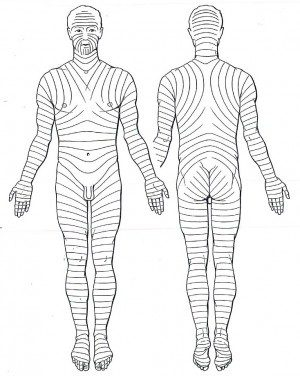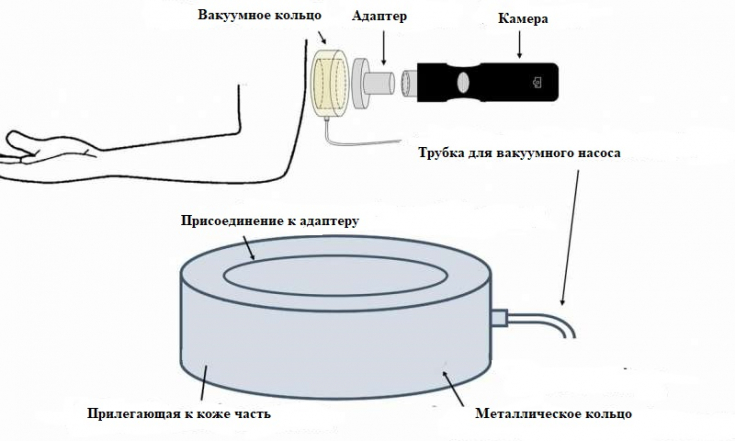Human skin is a tissue that exhibits anisotropic mechanical properties. This anisotropy is mainly due to the alignment of collagen and elastin fibers in the dermis, which causes the skin to show more tension in one direction, making it stiffer.
A variety of skin tension guidelines have been developed to help surgeons make incisions that produce the least visible scarring. However, skin anisotropy is believed to vary from subject to subject, and none of the guidelines is universally accepted as being the best for surgical applications. To date, there is no system that can quickly and non-invasively measure skin tension lines in vivo.
In the article estet-portal.com you can read in detail a study that evaluated the ability of a new suction system to measure the anisotropy of human skin.
Langer lines and skin strength: why is it important to determine the tension line
Langer lines (cleavage lines) — skin tension lines; skin lines along which it is maximally stretchable; the direction of the lines corresponds to the arrangement of bundles of collagen fibers.
Follow us on Telegram
The strength properties of the skin depend on the direction of the acting force relative to the orientation of the collagen fibers (Langer lines). The skin exerts maximum resistance when the direction of impact coincides with the orientation of these fibers, the specific tensile strength of the skin along the Langer lines requires a load almost 3 times greater than in the transverse direction.
The role of incision location in relation to the direction of collagen fibers
Skin is easier to stretch in one direction than the other, and this has been known for a long time. However, it has recently been discovered that these lines play an important role.

Firstly, surgeons use these lines to decide which direction to incise in order to make the least visible scarring. If the incision is made transverse to the collagen, then the risk of keloid scarring increases.
3 rarest plastic surgery procedures
Cut in the direction of aligned collagen and wounds heal better and produce less scarring. Surgeons currently use either maps of skin tension lines (of which there are many and often different) or manual manipulation to determine the local orientation of skin tension.
Manual manipulations are often inaccurate, and studies show that skin tension line directions differ between.
Device for the non-invasive individual determination of Langer's lines
The device painlessly applies a 17 kPa radial stress to the skin area and captures radially asymmetric skin deformities using a dermal camera.
These deformations are used to quantify the orientation of extreme deformations and the direction of greatest skin stiffness.
Clinical trials also show that the orientations of the Langer lines are comparable to existing maps, but differ statistically between individuals.
The ratio of these asymmetric strains varies from 1 to -0.75. A simple 2D transverse isotropic model captures this behavior for several anatomical sites. Clinical trials show that the orientations of skin tension lines are comparable to existing skin tension maps and are generally consistent between subjects, however the orientations differ statistically between individuals.
A terrible secret that plastic surgeons hide
Thus, the current guidelines seem to give only rough estimates of skin tension orientation.
For the first time, a device has been developed that can quickly and non-invasively measure the orientation of Langer lines in vivo using a single test. The results are used to create a simple constitutive skin mechanical anisotropy model.

The authors hope that surgeons will use this device to quickly and accurately determine the direction of the skin tension line and plan their incisions to minimize scarring.
Thank you for staying with estet-portal.com. Read other interesting articles in the "Plastic Surgery" section. You may be interested in 5 important steps in preparing for plastic surgery







Add a comment